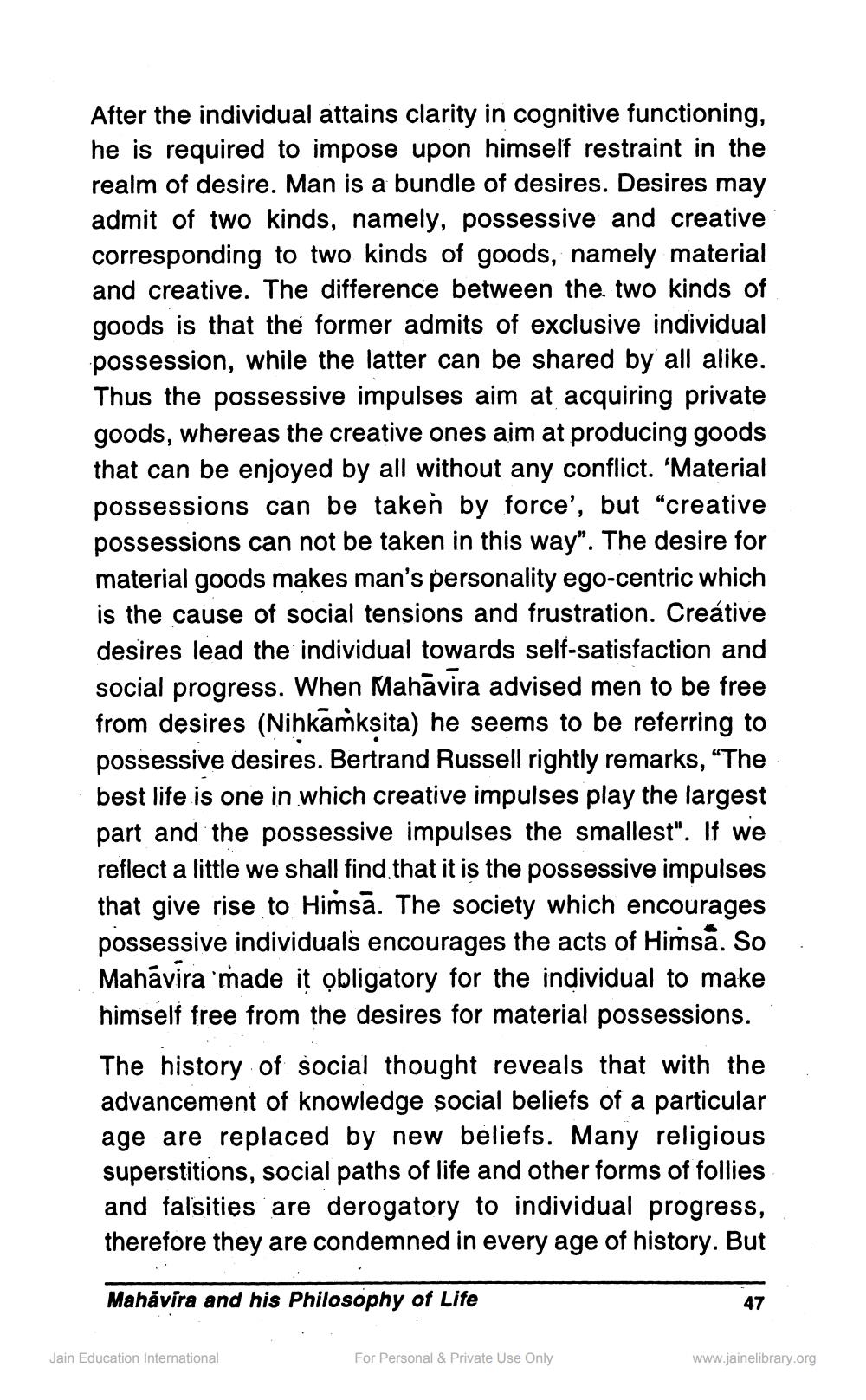________________
After the individual attains clarity in cognitive functioning, he is required to impose upon himself restraint in the realm of desire. Man is a bundle of desires. Desires may admit of two kinds, namely, possessive and creative corresponding to two kinds of goods, namely material and creative. The difference between the two kinds of goods is that the former admits of exclusive individual possession, while the latter can be shared by all alike. Thus the possessive impulses aim at acquiring private goods, whereas the creative ones aim at producing goods that can be enjoyed by all without any conflict. 'Material possessions can be taken by force', but "creative possessions can not be taken in this way". The desire for material goods makes man's personality ego-centric which is the cause of social tensions and frustration. Creative desires lead the individual towards self-satisfaction and social progress. When Mahavira advised men to be free from desires (Nihkamksita) he seems to be referring to possessive desires. Bertrand Russell rightly remarks, “The best life is one in which creative impulses play the largest part and the possessive impulses the smallest". If we reflect a little we shall find that it is the possessive impulses that give rise to Himsā. The society which encourages possessive individuals encourages the acts of Himsa. So Mahavira made it obligatory for the individual to make himself free from the desires for material possessions. The history of social thought reveals that with the advancement of knowledge social beliefs of a particular age are replaced by new beliefs. Many religious superstitions, social paths of life and other forms of follies and falsities are derogatory to individual progress, therefore they are condemned in every age of history. But
Mahåvira and his Philosophy of Life
Jain Education International
For Personal & Private Use Only
www.jainelibrary.org




